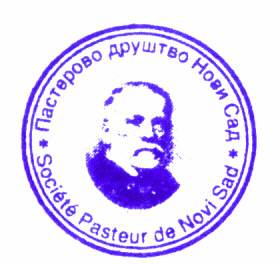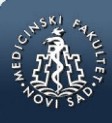md-medicaldata
Main menu:
- Naslovna/Home
- Arhiva/Archive
- Godina 2024, Broj 2
- Godina 2024, Broj 1
- Godina 2023, Broj 3
- Godina 2023, Broj 1-2
- Godina 2022, Broj 3
- Godina 2022, Broj 1-2
- Godina 2021, Broj 3-4
- Godina 2021, Broj 2
- Godina 2021, Broj 1
- Godina 2020, Broj 4
- Godina 2020, Broj 3
- Godina 2020, Broj 2
- Godina 2020, Broj 1
- Godina 2019, Broj 3
- Godina 2019, Broj 2
- Godina 2019, Broj 1
- Godina 2018, Broj 4
- Godina 2018, Broj 3
- Godina 2018, Broj 2
- Godina 2018, Broj 1
- Godina 2017, Broj 4
- Godina 2017, Broj 3
- Godina 2017, Broj 2
- Godina 2017, Broj 1
- Godina 2016, Broj 4
- Godina 2016, Broj 3
- Godina 2016, Broj 2
- Godina 2016, Broj 1
- Godina 2015, Broj 4
- Godina 2015, Broj 3
- Godina 2015, Broj 2
- Godina 2015, Broj 1
- Godina 2014, Broj 4
- Godina 2014, Broj 3
- Godina 2014, Broj 2
- Godina 2014, Broj 1
- Godina 2013, Broj 4
- Godina 2013, Broj 3
- Godina 2013, Broj 2
- Godina 2013, Broj 1
- Godina 2012, Broj 4
- Godina 2012, Broj 3
- Godina 2012, Broj 2
- Godina 2012, Broj 1
- Godina 2011, Broj 4
- Godina 2011, Broj 3
- Godina 2011, Broj 2
- Godina 2011, Broj 1
- Godina 2010, Broj 4
- Godina 2010, Broj 3
- Godina 2010, Broj 2
- Godina 2010, Broj 1
- Godina 2009, Broj 4
- Godina 2009, Broj 3
- Godina 2009, Broj 2
- Godina 2009, Broj 1
- Supplement
- Galerija/Gallery
- Dešavanja/Events
- Uputstva/Instructions
- Redakcija/Redaction
- Izdavač/Publisher
- Pretplata /Subscriptions
- Saradnja/Cooperation
- Vesti/News
- Kontakt/Contact
 Pasterovo društvo
Pasterovo društvo
- Disclosure of Potential Conflicts of Interest
- WorldMedical Association Declaration of Helsinki Ethical Principles for Medical Research Involving Human Subjects
- Committee on publication Ethics
CIP - Каталогизација у публикацији
Народна библиотека Србије, Београд
61
MD : Medical Data : medicinska revija = medical review / glavni i odgovorni urednik Dušan Lalošević. - Vol. 1, no. 1 (2009)- . - Zemun : Udruženje za kulturu povezivanja Most Art Jugoslavija ; Novi Sad : Pasterovo društvo, 2009- (Beograd : Scripta Internacional). - 30 cm
Dostupno i na: http://www.md-medicaldata.com. - Tri puta godišnje.
ISSN 1821-1585 = MD. Medical Data
COBISS.SR-ID 158558988
VARIJABILNOST MIKROSATELITSKIH MARKERA X HROMOZOMA I NJIHOVA PRIMENA U FORENZICI
GENETIC VARIABILITY OF X CHROMOSOME MICROSATELLITE MARKERS IN FORENSIC ANALYSIS
Authors
Dušan Vapa1, Igor Veselinović1, Radosav Radosavkić1, Nevena Veličković2, Milan Popović3
1Katedra za sudsku medicinu, Univerzitet u Novom Sadu, Medicinski fakultet,
2Departman za biologiju i ekologiju, Univerzitet u Novom Sadu Prirodno-matematički fakultet,
3Katedra za histologiju i embriologiju, Univerzitet u Novom Sadu, Medicinski Fakultet
Rad je primljen 24.07.2017. / Prihvaćen 01.08.2017.
Correspondence to
Doc. dr Dušan Vapa,
Univerzitet u Novom Sadu
Medicinski fakultet, Katedra za sudsku medicinu,
Hajduk Veljkova 3,
21 000 Novi Sad
e-mail: dusan.vapa@mf.uns.ac.rs
Sažetak
Kratki uzastopni ponovci predstavljaju klasu mikrosatelitskih segmenata DNK, rasprostranjenih širom genoma čoveka. Građeni su od uzastopno ponavljajućih sekvenci dužine 2-6 parova nukleotida. Zahvaljujući različitom broju ponavljanja repetitivne jedinice, većina mikrosatelitskih markera pokazuje visok stepen polimorfizma dužine, koji je moguće ispitati primenom tehnike lančane reakcije polimeraze. Pored utvrđivanja spornih srodničkih odnosa, analiza X hromozom mikrosatelitskih markera može se uspešno koristiti i u oblastima kriminalistike, humane identifikacije, populaciono-genetičkim i demografskim istraživanjima i dr. Cilj našeg istraživanja bila je izrada populacione studije, iz koje će se izračunati broj i frekvencija alela, struktura i frekvencija haplotipova, utvrditi vrednosti relevantnih statističkih parametara, i oceniti mogućnost primene analize X-STR markera u slučajevima iz oblasti medicinske kriminalistike, humane identifikacije i veštačenja spornih srodničkih odnosa u populaciji Vojvodine. Istraživanje je izvršeno u Centru za sudsku medicinu, toksikologiju i molekularnu genetiku, u Novom Sadu, u vidu prospektivne studije, na uzorku od 200 odraslih, međusobno nesrodnih osoba, oba pola. Izolacija DNK vršena je Chelex metodom, amplifikacija dobijenih uzoraka vršena je metodom PCR, uz korišćenje komercijalnog Mentype® Argus X-8 PCR Amplification Kit-a. Razdvajanje dobijenih fragmenata izvršeno je kapilarnom elektroforezom na aparatu ABI Prism 310 Genetic Analyzer. Za interpretaciju dobijenih rezultata korišten je GeneScan i Genotyper program, a za statističke analize programi Arlequin i GENEPOP. Dobijeni rezultati ukazuju da se ova metoda može uspešno primeniti u oblastima medicinske kriminalistike, humane identifikacije i veštačenja spornih srodničkih odnosa, a ujedno predstavljaju i bazu podataka za dalja istraživanja.
Ključne reči:
DNK; Mikrosatelitski markeri; X-STR; sudska medicina; forenzička genetika
Abstract
The aim of this research was to conduct a population study, which results will be used to calculate allele and haplotype frequencies, determine the value of relevant statistical parameters and assess the possibility of applying X-STR markers analysis in the fields of forensics, human identification and kinship testing. The study included 200 unrelated adults. DNA isolation was performed by Chelex method. DNA amplification was performed by PCR method, using commercial Mentype Argus X-12 PCR Amplification Kit. Separation and detection of fragments was obtained by capillary electrophoresis using GeneScan and Genotyper program. Statistical analysis of the results was performed using Arlequin and GENEPOP program. For visualization of interpopulation genetic distances POPTREE2 program was used. The results show that the analysis of X-STR markers can be successfully applied in the field of forensics, human identification and kinship testing in the population of Vojvodina, as well as to serve as a basis for further research in population genetic, anthropological, demographic and other scientific areas. According to authors current knowledge, the study of X chromosome microsatellite markers was never conducted in our country and these data represent the first population data of its kind in Serbia.
Key words:
X-Chromosome STRs; Argus X-12; Population data; Forensic genetics; Microsatellite repeats; Serbian population.
References
- Joblig MA, Gill P. Encoded evidence: DNA in forensic analysis. Nature Rev Genet 2004;5:739-751.
- Wright S. The genetical structure of populations. Ann Eugen 1951;15(4):323-354.
- Balding DJ, Nichols RA. A method for quantifying differentiation between populations at multi-allelic loci and its implications for investigating identity and paternity. Genetica (Springer) 1995;96:3-12.
- Walsh BS, Metzger DA, Higuchi R. Chelex-100 as a medium for simple extraction of DNA for PCR-based typing from forensic material. BioTechniques 1991;10:506-513.
- Mentype® Argus X-8 PCR Amplification Kit User’s Manual. Biotype AG, Dresden, Germany, 2009.
- Kishida T, Wang W, Fukuda M, Tamaki Y. Duplex PCR of the Y-27H39 and HPRT loci with reference to Japanese population data on the HPRT locus. Nippon Hoigaku Zasshi 1997;51:67-69.
- Desmarais D, Zhong Y, Chakraborty R, Perreault C, Busque L. Development of a highly polymorphic STR marker for identity testing purposes at the human androgen receptor gene (HUMARA). J Forensic Sci 1998;43:1046-1049
- Kruger J, Fuhrmann W, Lichte KH, Steffens C. On the utilization of erythrocyte acid phosphatase polymorphism in paternity evaluation. Dtsch Z Gerichtl Med 1968;64:127-146.
- Botstein D, White RI, Skolnick M, Davis RW. Construction of a genetic linkage map in man using restriction fragment length polymorphisms. Am J Hum Genet 1980;32:314-331.
- Nei M, Roychoudhury AK. Sampling variances of heterozygosity and genetic distance. Genetics 1974;76:379-390.
- Takezaki N, Nei M, Tamura K. POPTREE2: Software for Constructing Population Trees from Allele Frequency Data and Computing Other Population Statistics with Windows Interface. Mol Biol Evol 2010;27(4):747-752.
- Latter BDH. Selection in finite populations with multiple alleles. III. Genetic divergence with centripetal selection and mutation. Genetics 1972;70:475-490.
- Peakall R, Smouse PE. GenAlEx 6.5: genetic analysis in Excel. Population genetic software for teaching and research-an update. Bioinformatics 2012;28:2537-2539.
- Lim EJ, Lee HY, Sim JE, Yang WI, Shi KJ. Genetic Polymorphism and Haplotype Analysis of 4 Tightly Linked X-STR Duos in Koreans. Croat Med J 2009;50:305-312.
- Hedman M, Palo JU, Sajantila A. X-STR diversity patterns in the Finnish and the Somali population. Forensic Sci Int Genet 2009;3(3):173-178.
- Zeng XP, Ren Z, Chen JD, Lu DJ, Tong DY, Chen H, Sun HJ. A genetics polymorphism of twelve X-chromosomal STR loci in Chinese Han population from Guangdong Province. Forensic Sci Int Genet 2011;3:e365-366.
- Diegoli T, Linacre A, Vallone P, Butler J, Coble M. Population genetic data for 15 X chromosomal short tandem repeat markers in three U.S. populations. Forensic Sci Int Genet 2014;8(1):64-67.
- Poetsch M, Knop A, El-Mostaqim D, Rakotomavo N, von Wurmb-Schwark N. Allele frequencies of 11 X-chromosomal loci of two population samples from Africa. Int J Legal Med 2011;125(2):307-314.
- Gomes I, Amorim A, Pereira V, Carracedo A, Gusmao L. Genetic patterns of 10 X chromosome short tandem repeats in an Asian population from Macau. Forensic Sci Int Genet Suppl Series 2009;2:402-404.
- Gršković B, Zidkova A, Stenzl V, Popović M, Primorac D, Mršić G. Analysis of 8 X-chromosomal markers in the population of central Croatia. Croat Med J 2013;54(3):238-247.
- Tomas C, Pereira V, Morling N. Analysis of 12 X-STRs in Greenlanders, Danes and Somalis using Argus X-12. Int J Legal Med 2012;126:121-128.
- Becker D, Rodig H, Augustin C, Edelmann J, Gotz F, Hering S, et al.Population genetic evaluation of eight X-chromosomal short tandem repeat loci using Mentype Argus X-8 PCR amplification kit. Forensic Sci Int Genet 2008 Jan;2(1):69-74.
- Bini C, Riccardi LN, Ceccardi S, Carano F, Sarno S, Luiselli D, et al. Expanding X-chromosomal forensic haplotype frequencies database: Italian population data of four linkage groups. Forensic Sci Int Genet 2015;15:127-130.
- Rebala K, Kotova SA, Rybakova VI, Zabauskaya TV, Shyla AA, Spivak AA,et al. Variation of X-chromosomal microsatellites in Belarus within the context of their genetic diversity in Europe. Forensic Sci Int Genet 2015;16:105-111.
- Horvath G, Zalan A, Kis Z, Pamjav H. A genetic study of 12 STR loci in the Hungarian population. Forensic Sci Int Genet 2012;6:e46-47.
- Zidkova A, Capek P, Horinek A, Coufalova P. Investigator® Argus X-12 study on the population of Czech Republic: comparison of linked and unlinked XSTRs for kinship analysis. Electrophoresis 2014;35(14):1989-1992.
- Tomas C, Skitsa I, Steinmeier E, Poulsen L, Ampati A, Borsting C, et al. Results for five sets of forensic genetic markers studied in a Greek population sample. Forensic Sci Int Genet 2015;16:132-137.
UDK: 547.963.3:343.983
COBISS.SR-ID 245428236
PDF Vapa D. et al • MD-Medical Data 2017;9(3): 171-176
 Medicinski fakultet
Medicinski fakultet